Cylindrical Three-Dimensional Porous Anodic Alumina Networks
Abstract
:1. Introduction
2. Materials and Methods
3. Results
4. Discussion
Acknowledgments
Author Contributions
Conflicts of Interest
References
- Masuda, H.; Satoh, M. Fabrication of gold nanodot array using anodic porous alumina as an evaporation mask. Jpn. J. Appl. Phys. 1996, 35, L126–L129. [Google Scholar] [CrossRef]
- Manzano, C.V.; Martín, J.; Martín-González, M. Ultra-narrow 12 nm pore diameter self-ordered anodic alumina templates. Microporous and Mesoporous Mater. 2014, 184, 177–183. [Google Scholar] [CrossRef]
- Kikuchi, T.; Nishinaga, O.; Natsui, S.; Suzuki, R.O. Fabrication of self-ordered porous alumina via etidronic acid anodizing and structural color generation from submicrometer-scale dimple array. Electrochim. Acta 2015, 156, 235–243. [Google Scholar] [CrossRef]
- Masuda, H.; Fukuda, K. Ordered metal nanohole arrays made by a two-step replication of honeycomb structures of anodic alumina. Science 1995, 268, 1466–1468. [Google Scholar] [CrossRef] [PubMed]
- Béron, F.; Pirota, K.R.; Vega, V.; Prida, V.M.; Fernández, A.; Hernando, B.; Knobel, M. An effective method to probe local magnetostatic properties in a nanometric FePd antidot array. New J. Phys. 2011, 13, 013035. [Google Scholar] [CrossRef]
- Lee, W.; Park, S.-J. Porous anodic aluminum oxide: Anodization and templated synthesis of functional nanostructures. Chem. Rev. 2014, 114, 7487–7556. [Google Scholar] [CrossRef] [PubMed]
- Martín, J.; Martín-González, M.; Fernández, J.F.; Caballero-Calero, O. Ordered three-dimensional interconnected nanoarchitectures in anodic porous alumina. Nat. Commun. 2014, 5, 5130. [Google Scholar] [CrossRef] [PubMed]
- Lee, W.; Schwirn, K.; Steinhart, M.; Pippel, E.; Scholz, R.; Gösele, U. Structural engineering of nanoporous anodic aluminium oxide by pulse anodization of aluminium. Nat. Nanotechnol. 2008, 3, 234–239. [Google Scholar] [CrossRef] [PubMed]
- Losic, D.; Losic, D. Preparation of porous anodic alumina with periodically perforated pores. Langmuir 2009, 25, 5426–5431. [Google Scholar] [CrossRef] [PubMed]
- Banerjee, S.; Myung, Y.; Banerjee, P. Confined anodic aluminum oxide nanopores on aluminum wires. RSC Adv. 2014, 4, 7919–7926. [Google Scholar] [CrossRef]
- Sanz, R.; Hernández-Vélez, M.; Pirota, K.R.; Baldonedo, J.L.; Vázquez, M. Fabrication and magnetic functionalization of cylindrical porous anodic alumina. Small 2007, 3, 434–437. [Google Scholar] [CrossRef] [PubMed]
- Sanz, R.; Navas, D.; Vazquez, M.; Hernández-Vélez, M.; Ross, C.A. Preparation and magnetic properties of cylindrical NiFe films and antidot arrays. J. Nanosci. Nanotechnol. 2010, 10, 6775–6778. [Google Scholar] [CrossRef] [PubMed]
- Garcia, J.; Prida, V.M.; Vega, V.; Rosa, W.O.; Caballero-Flores, R.; Iglesias, L.; Hernando, B. 2D and 3D ordered arrays of Co magnetic nanowires. J. Magn. Magn. Mater. 2015, 383, 88–93. [Google Scholar] [CrossRef]
- Law, C.S.; Santos, A.; Kumeria, T.; Losic, D. Engineered therapeutic-releasing nanoporous anodic alumina-aluminum wires with extended release of therapeutics. ACS Appl. Mater. Interfaces 2015, 7, 3846–3853. [Google Scholar] [CrossRef] [PubMed]
- Wang, X.; Kulkarni, S.A.; Li, Z.; Xu, W.; Batabyal, S.K.; Zhang, S.; Cao, A.; Helena, L. Wire-shaped perovskite solar cell based on TiO2 nanotubes. Nanotechnology 2016, 27, 20LT01. [Google Scholar] [CrossRef] [PubMed]
- Gulati, K.; Sinn Aw, M.; Losic, D. Nanoengineered drug-releasing Ti wires as an alternative for local delivery of chemotherapeutics in the brain. Int. J. Nanomed. 2012, 7, 2069–2076. [Google Scholar]
- Belwalkar, A.; Grasing, E.; Van Geertruyden, W.; Huang, Z.; Misiolek, W.Z. Effect of processing parameters on pore structure and thickness of anodic aluminum oxide (AAO) tubular membranes. J. Membr. Sci. 2008, 319, 192–198. [Google Scholar] [CrossRef] [PubMed]
- Bernabeu, E.; Sanchez-Brea, L.M.; Siegmann, P.; Martinez-Antón, J.C.; Gómez-Pedrero, J.A.; Wilkening, G.; Koenders, L.; Mueller, F.; Hildebrand, M.; Hermann, H. Classification of surface structures on fine metallic wires. Appl. Surf. Sci. 2001, 180, 191–199. [Google Scholar] [CrossRef]
- Zaraska, L.; Sulka, G.D.; Szeremeta, J.; Jaskuła, M. Porous anodic alumina formed by anodization of aluminum alloy (AA1050) and high purity aluminum. Electrochim. Acta 2010, 55, 4377–4386. [Google Scholar] [CrossRef]
- Ding, G.Q.; Zheng, M.J.; Xu, W.L.; Shen, W.Z. Fabrication of controllable free-standing ultrathin porous alumina membranes. Nanotechnology 2005, 12, 1285–1289. [Google Scholar] [CrossRef]
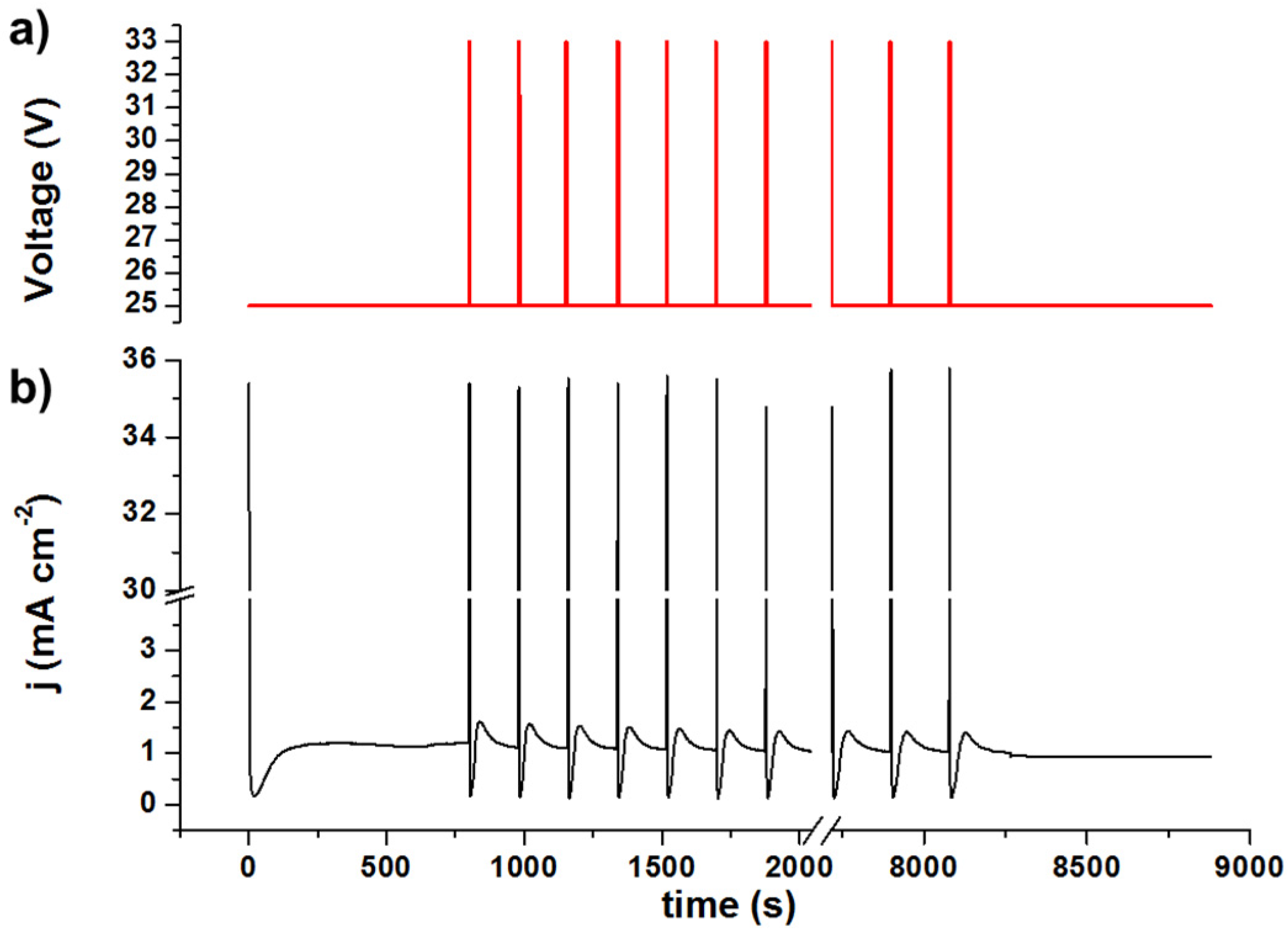
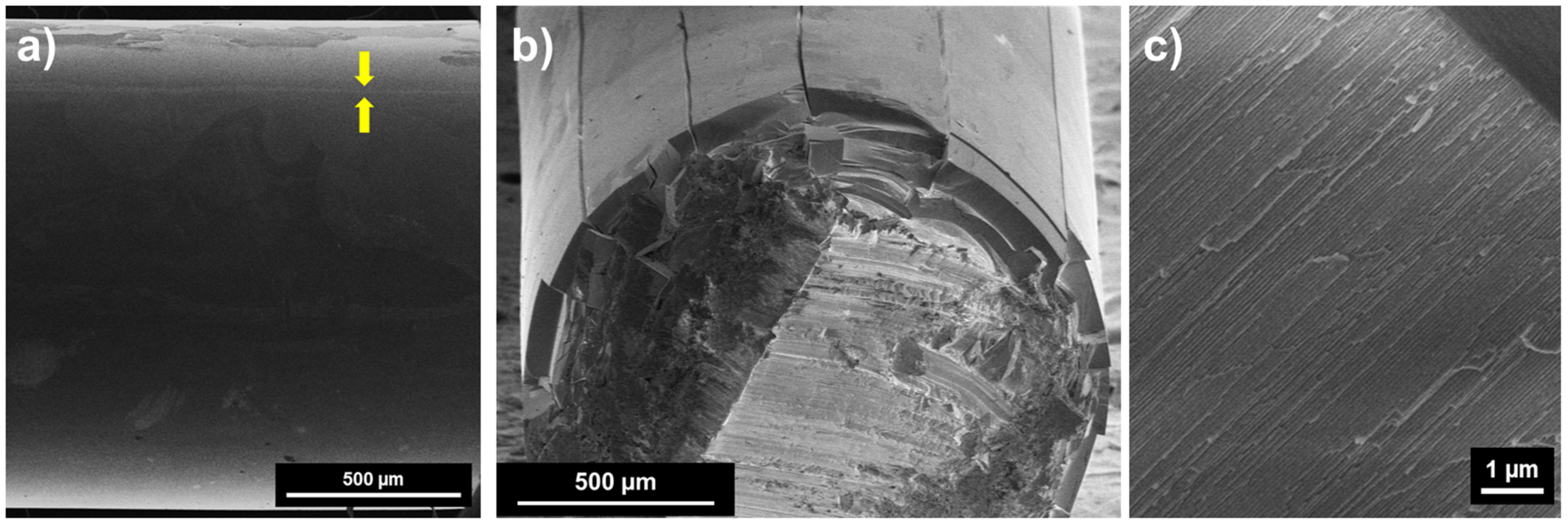
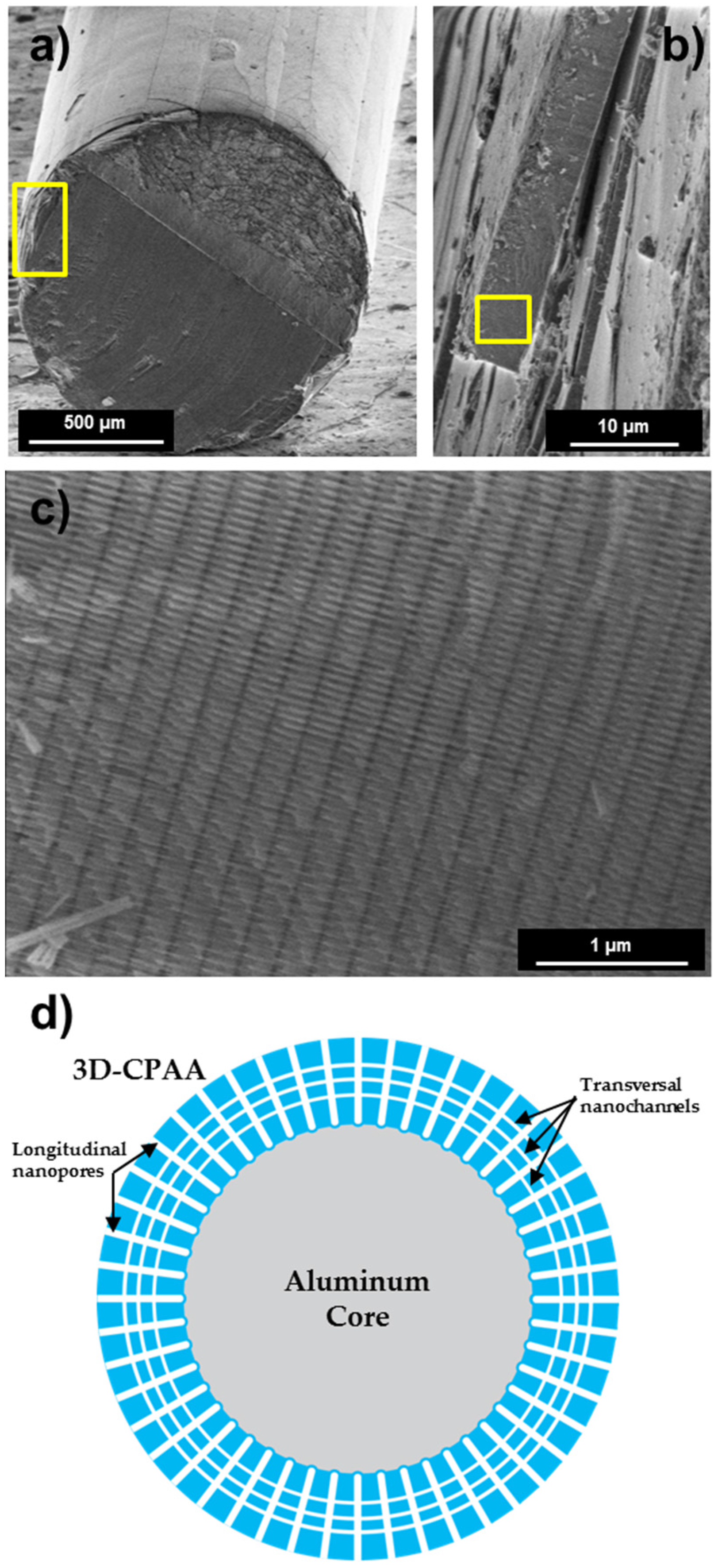
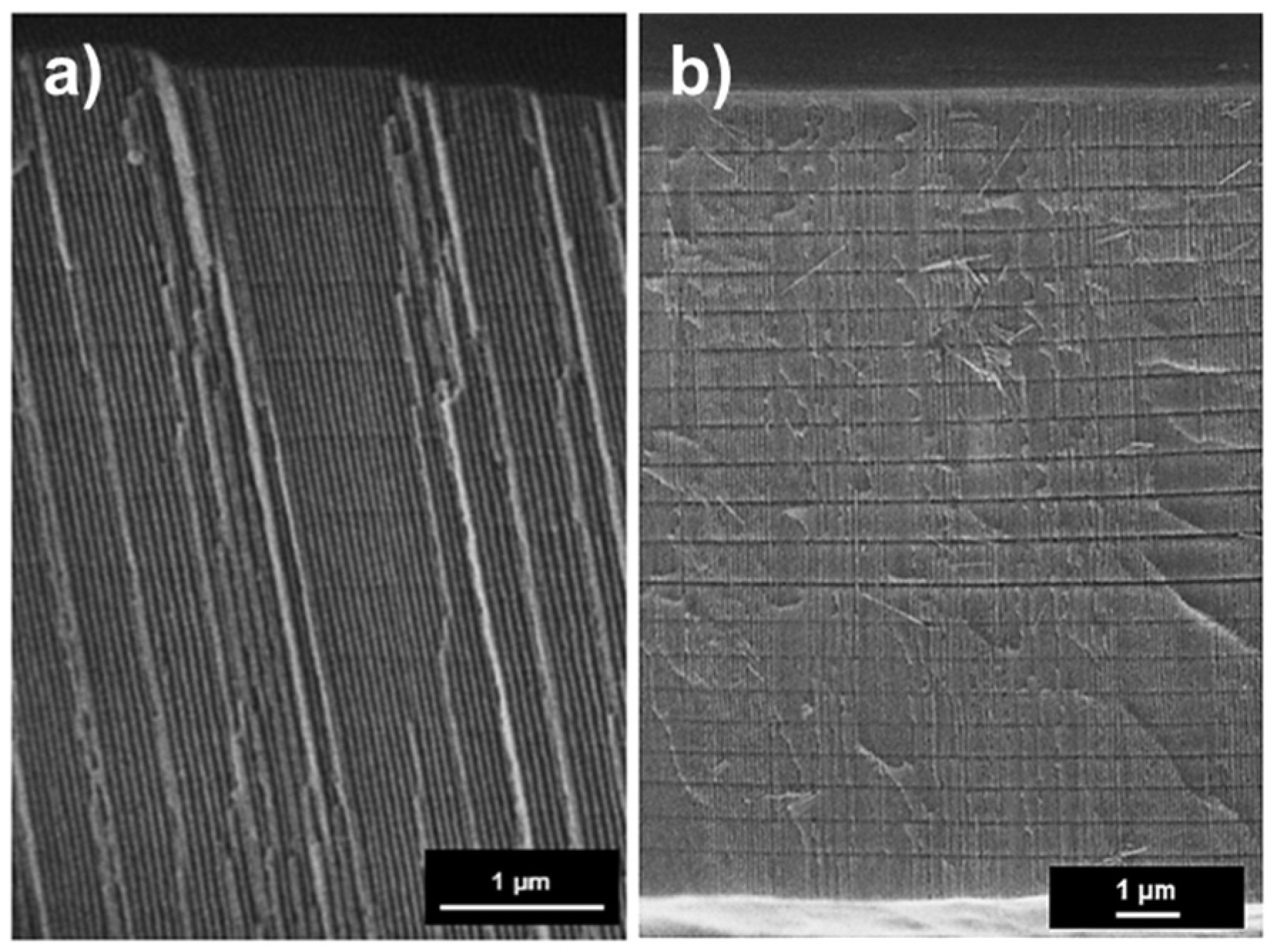
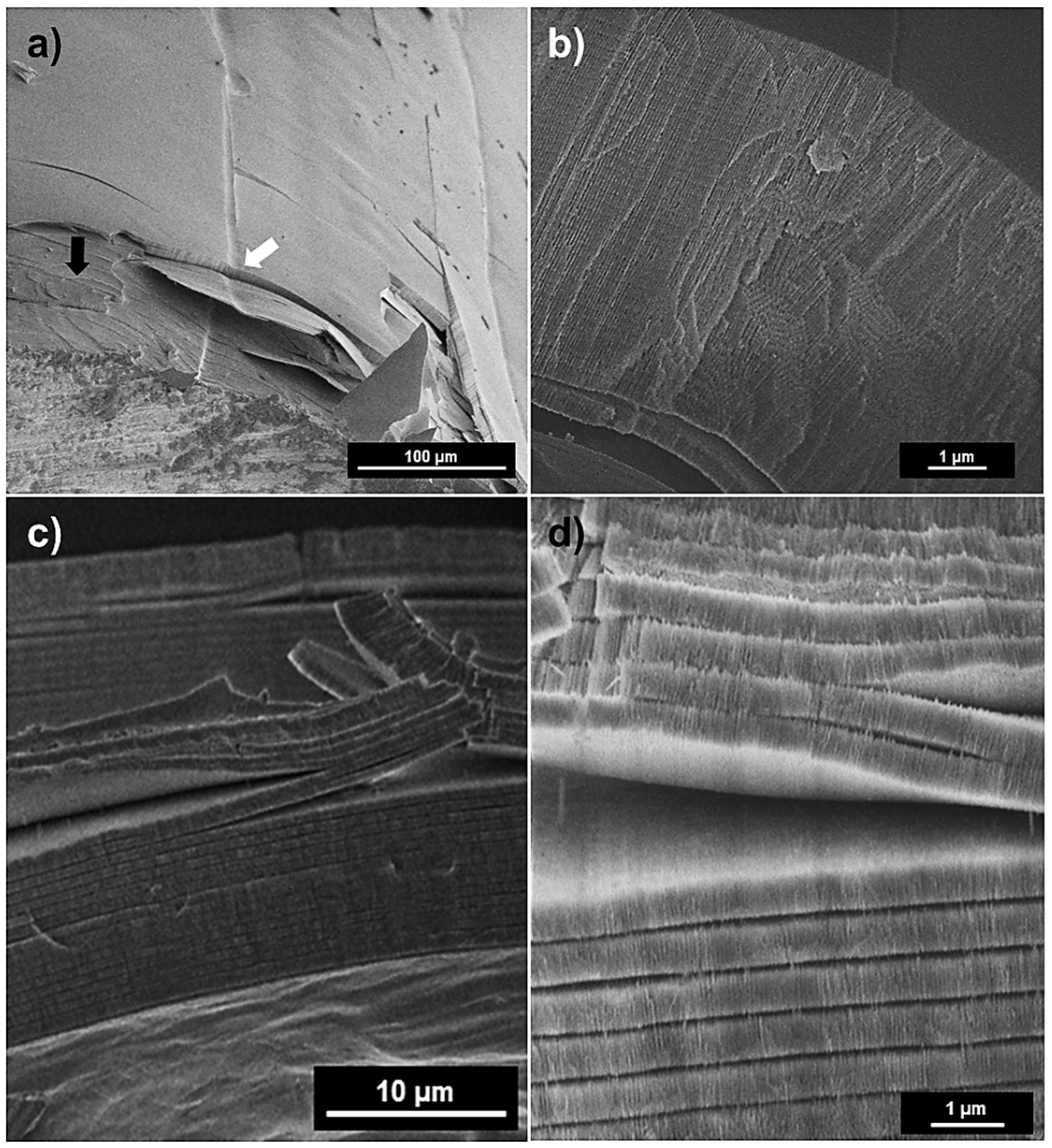
| Sample Type | Period Between Pulses (s) | Second Anodization Time (s) | Number of Pulses |
|---|---|---|---|
| S180 | 180 | 8880 | 40 |
| S360 | 360 | 8840 | 20 |
| S540 | 540 | 12440 | 20 |
© 2016 by the authors; licensee MDPI, Basel, Switzerland. This article is an open access article distributed under the terms and conditions of the Creative Commons Attribution (CC-BY) license (http://creativecommons.org/licenses/by/4.0/).
Share and Cite
Resende, P.M.; Sanz, R.; Ruiz-de Clavijo, A.; Caballero-Calero, O.; Martin-Gonzalez, M. Cylindrical Three-Dimensional Porous Anodic Alumina Networks. Coatings 2016, 6, 59. https://doi.org/10.3390/coatings6040059
Resende PM, Sanz R, Ruiz-de Clavijo A, Caballero-Calero O, Martin-Gonzalez M. Cylindrical Three-Dimensional Porous Anodic Alumina Networks. Coatings. 2016; 6(4):59. https://doi.org/10.3390/coatings6040059
Chicago/Turabian StyleResende, Pedro M., Ruy Sanz, Alejandra Ruiz-de Clavijo, Olga Caballero-Calero, and Marisol Martin-Gonzalez. 2016. "Cylindrical Three-Dimensional Porous Anodic Alumina Networks" Coatings 6, no. 4: 59. https://doi.org/10.3390/coatings6040059
APA StyleResende, P. M., Sanz, R., Ruiz-de Clavijo, A., Caballero-Calero, O., & Martin-Gonzalez, M. (2016). Cylindrical Three-Dimensional Porous Anodic Alumina Networks. Coatings, 6(4), 59. https://doi.org/10.3390/coatings6040059






